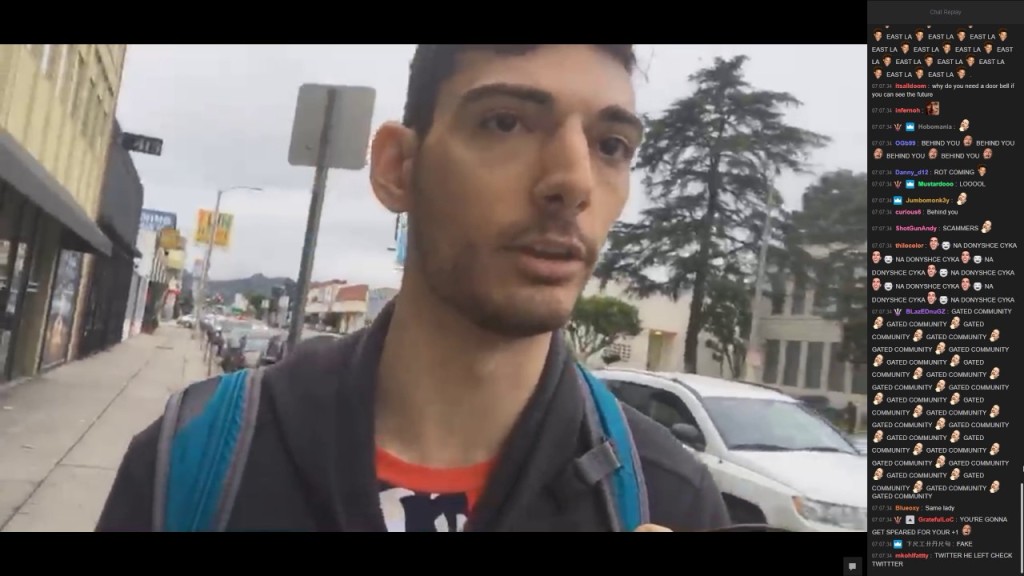 Ice Poseidon
Ice Poseidon
In this blog post, I’ll use the concept of power topologies from Nishat Awan’s essay “Digital Narratives and Witnessing: The Ethics of Engaging with Places at a Distance” to analyze the phenomenon of IRL (in real life) livestreaming, particularly the case of Ice Poseidon.
Ice Poseidon, whose real name is Paul Denino, is the “most notorious of what are known as I.R.L. streamers” (from Ice Poseidon’s Lucrative, Stressful Life as a Live Streamer by Adrian Chen). Denino livestreams his life and viewers influence it by watching, commenting, and even affecting his physical life by regularly accosting him in the streets and swatting his home.
Awan uses the term power topologies “to describe the ability of actors to affect places across distance and proximity.” The instant communication of the internet collapses physical space and makes it possible to act across it. She further describes how technology creates these topologies:
“Topology in this context highlights the intensive nature of the world that such technologies create because as power reaches across space it is not so much traversing across a fixed space and time, as it is composing its own space–time.”
Awan describes how the internet makes places in crisis like Gwadar visible, and how digital witnessing “contributes to the portrayal of certain parts of the world as being in a permanent crisis, but one that can be influenced from afar with the click of a button.” There is a power imbalance between the privileged, first world people wielding this technology, and their depiction of these places as being in conflict.
IRL livestreaming also makes visible experiences that weren’t before, in a very different way. We are allowed continuous access into someone else’s life. The power topology is different, as all people involved have access to livestreaming technology and the time to engage with it. The streamer willingly broadcasts his life, but becomes entangled in economic realities. Chen writes that “the fact that fickle viewers are also a live streamer’s investors makes this balance more precarious than it is in perhaps any other form of entertainment.”
Awan’s topology of digital witnessing sets up viewers are empowered and the viewed are victims. In a way, Denino’s livestream also positions himself a victim. Denino is open about his mental illnesses, and viewers attempt to exploit them and upset him. The streamer makes himself visible at all times, and controls the conversation by being the object of attention. Viewers are invisible but they have the infinite agency afforded to them by the internet. Perhaps this anonymity empowers them to remotely harass Denino. Chen writes:
“Swatting has exploded in popularity in recent years, owing in part to the rise of live streaming. Previously, the hoaxer would have to imagine his target’s distress when a team of heavily armed police officers broke down his door. But, if the target is broadcasting himself live, the hoaxer can see his handiwork play out in real time.”
In this way, remote control is not only beneficial, as in the case of giving aid to people in crisis. It can also enable disruptive violence that viewers would not be inclined to do if they weren’t seeing the person affected live.
References
Awan, Nishat. “Digital Narratives and Witnessing: The Ethics of Engaging with Places at a Distance.” GeoHumanities, 2:2, 2016, pp. 311-330.
Chen, Adrian. “Ice Poseidon’s Lucrative, Stressful Life as a Live Streamer.” The New Yorker, 7 Sep. 2018. https://www.newyorker.com/magazine/2018/07/09/ice-poseidons-lucrative-stressful-life-as-a-live-streamer.